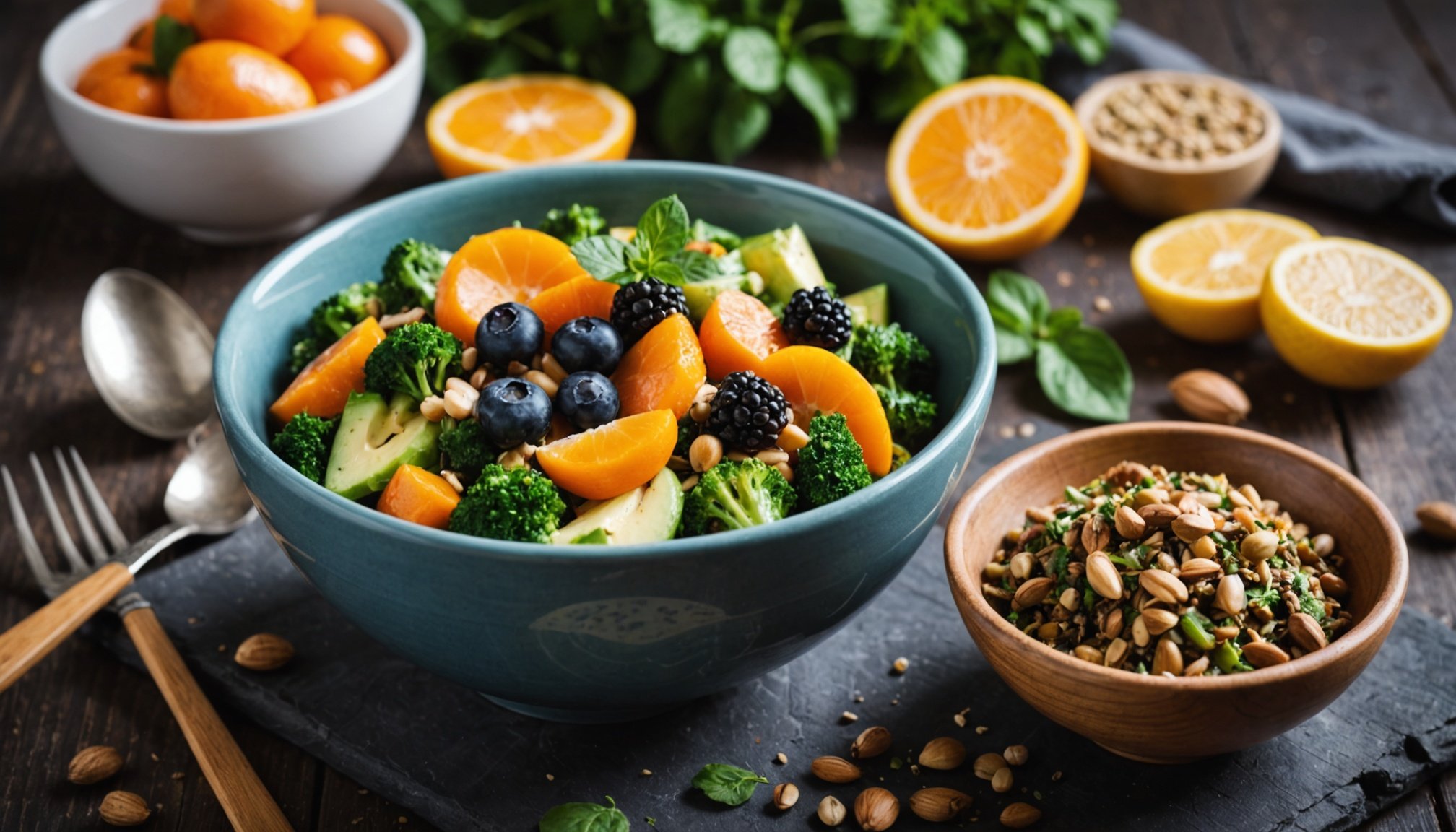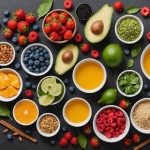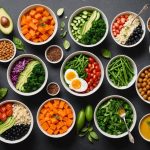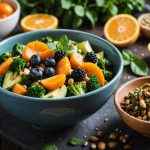Understanding the Raw Food Lifestyle During Winter
The raw food diet is a plant-based approach that involves consuming unprocessed and uncooked foods, emphasizing fresh fruits, vegetables, nuts, and seeds. During winter, the focus shifts slightly due to the need for winter nutrition and maintaining energy levels despite colder temperatures.
Winter Nutrition Essentials
In winter, it’s crucial to select energizing foods that support heat production and vitality. While the raw food diet typically revolves around cooling fruits like watermelon and cucumbers in summer, winter choices emphasize more hearty options. Think of root vegetables or dense nuts and seeds. These choices offer more density and energy retention, suitable for the body’s increased energy demands due to cold weather.
Also to discover : Crafting the Perfect Balanced Vegetarian Diet for Athletes in the UK: A Comprehensive Guide
Differences in Seasonal Choices
Winter nutrition under the raw food diet leans more towards foods that can stabilize energy, such as avocados and sprouted grains. These provide necessary warmth without needing to be cooked. Meanwhile, summer allows for lighter foods that don’t weigh the body down or overly cool it.
Adapting to the seasons while following raw food principles ensures that your body remains energized and aligned with natural, changing conditions. This balance is central to maintaining overall health throughout the year.
Topic to read : Essential Tips for Sticking to a Gluten-Free Diet During Your UK Travels
Energizing Raw Food Choices for Winter
Winter weather often calls for comforting meals, but for those seeking to energize with raw foods, discovering winter superfoods can be a pleasant surprise. Among these, nutrient-rich seasonal fruits and vegetables provide a natural surge of energy. Think of root vegetables like sweet potatoes and carrots, which are not only delightful but also stocked with nutrients.
Venturing into energizing raw recipes, high-calorie raw foods are invaluable. Avocados, for example, offer a creamy texture perfect for winter salads or smoothies. Pairing these with bananas can elevate their sweetness and calorie content, delivering essential fats and carbohydrates for longer-lasting nourishment.
A creative approach to nuts and seeds provides additional energy sources during cold months. Incorporate a mix of almonds, hazelnuts, and sunflower seeds into your diet; they are not only high in healthy fats and protein but also add an exciting crunch to any dish.
The nutritional value found in these raw ingredients ensures that even when the weather is bleak, your diet remains vibrant. These choices not only invigorate your body but also help maintain high energy, offering an ideal solution for the winter blues.
Meal Planning Strategies
When cold months roll in, meal planning requires thoughtful adjustments. Incorporating raw meal prep into your routine can not only preserve nutritional value but also infuse creativity into winter meal planning.
Tips for Effective Meal Preparation
To ensure a smooth meal planning process, batch preparation is essential. Begin by choosing raw ingredients that you enjoy and are easy to prepare. Emphasise variety in your needs to prevent boredom: a mix of greens, nuts, and seeds enhances both flavour and nutrition. Having recipe ideas ready keeps the process stress-free, allowing you to enjoy different textures and tastes.
Creating a Weekly Raw Food Menu
Organising a weekly menu tailored to your preferences simplifies raw meal prep. Start by listing potential recipe ideas focusing on nutritional balance. Allocate specific meals to each day, and prepare ingredients in advance to save time. Make sure to incorporate seasonal produce to keep meals fresh and appealing.
Storing and Preserving Raw Ingredients
Effective storage techniques are vital for maintaining freshness. Utilising freeze-dried and dehydrated foods allows for a broad selection of raw ingredients during winter, making them convenient. Proper preservation techniques enable longer-lasting ingredients, ensuring you always have access to wholesome, raw meal options without compromising on variety or taste.
Warm and Energizing Raw Food Recipes
While raw food is often associated with cool, crisp salads, it can also include comforting and warming dishes. One way to enjoy these flavors is through innovative raw soup recipes that offer nourishment and warmth.
Raw soups are made by blending ingredients to preserve their nutrients while creating comforting broths. They offer a unique opportunity to combine a variety of flavors and textures in a single, warming dish. Consider using ingredients like butternut squash and carrots for a rich and naturally sweet base, supplemented with spices like ginger or turmeric for added warmth and depth.
The key to crafting these dishes is embracing winter produce. Think root vegetables and hearty greens that provide comforting flavors and substantial textures. The recipes are easy to make, often requiring just a blender and your favorite seasonal ingredients. Start by blending avocados with cucumber and fresh herbs for a creamy, refreshing concoction, or experiment with blending bell peppers and tomatoes for a vibrant and zesty soup.
This collection of raw dishes not only warms the body but also satisfies the craving for tasty, enlivening meals during the colder months.
Essential Nutrients for Winter Wellness
Winter brings unique challenges to maintaining a balanced diet. Ensuring you get essential vitamins during this season is crucial for sustaining energy and bolstering the immune system.
Key Vitamins and Minerals for Winter Energy
- Vitamin D: Often called the “sunshine vitamin”, it’s crucial when daylight is sparse. Supplements or fortified foods can be helpful.
- Vitamin C: Supports the immune system. Opt for citrus fruits and nutrient-dense foods like kiwi and bell peppers.
- Iron: Vital for preventing fatigue. Leafy greens and legumes are excellent raw food nutrition sources.
Importance of Hydration and Raw Juices
Staying hydrated is vital, even in cold weather. Raw juices are a fantastic way to remain refreshed. Try incorporating vegetable and fruit blends that maximize raw food nutrition while providing hydration.
Tips for Balanced Nutrition on a Raw Diet
Balancing nutrition while on a raw diet in winter can be challenging. Here are some tips:
- Incorporate nuts and seeds to boost protein intake.
- Plan meals with diverse nutrient-dense foods to ensure you get all necessary vitamins.
- Stay creative with salads and juices to maintain interest and variety.
By focusing on these elements, you can maintain wellness and energy during winter while sticking to a raw diet.
Combatting Winter Fatigue with a Raw Food Lifestyle
Winter can often bring on increased levels of fatigue. However, adopting specific lifestyle adjustments can counteract this. Energy-boosting habits are foundational, starting with ensuring daily physical activity. Engaging in outdoor exercises or indoor routines can invigorate both mind and body, making you feel more alert and vibrant.
Integrating a raw food diet can also dramatically enhance energy levels. Consuming fresh fruits and vegetables provides essential vitamins and minerals that are crucial for combating winter fatigue. This includes iron from leafy greens to maintain healthy blood flow and magnesium for muscle health. Remember the simplicity of food preparation in a raw diet can also contribute to maintaining enthusiasm and consistency during winter.
Motivation is another key aspect. Tricks such as meal planning and trying new recipes help keep your raw eating exciting, avoiding the mundanity often felt during colder months. Visualizing your health goals or joining a community of like-minded individuals can provide additional motivation and support. These energy-boosting habits do not only counter winter fatigue but sustain an overall lively lifestyle throughout the year. Making these small, proactive changes can lead to substantial benefits, both mentally and physically.











